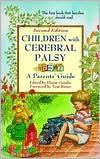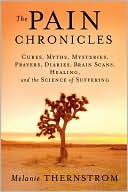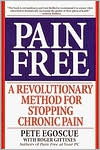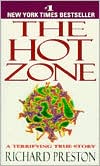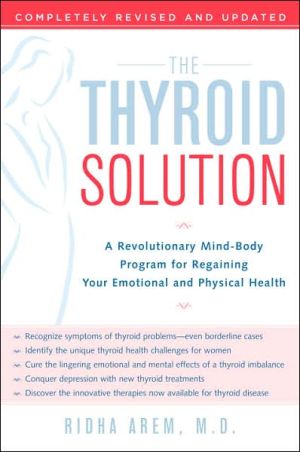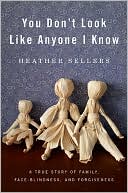Children with Cerebral Palsy: A Parents' Guide
Children with Cerebral Palsy, considered by many the first book that families should read, is now available in a second edition. As one of Woodbine House's Parents' Guides, it provides parents with a complete spectrum of information and compassionate advice about cerebral palsy and its effect on their child's development and education.\ The second edition, written by the same team of medical specialists, therapists, educators, and parents, as the first edition, covers these important areas:\...
Search in google:
Children with Cerebral Palsy, considered by many the first book that families should read, is now available in a second edition. As one of Woodbine House's Parents' Guides, it provides parents with a complete spectrum of information and compassionate advice about cerebral palsy and its effect on their child's development and education.The second edition, written by the same team of medical specialists, therapists, educators, and parents, as the first edition, covers these important areas: Diagnosis Coping with Your Emotions Medical Issues Daily Care Family Life Development Therapies Early Intervention Special Education Legal Rights Advocacy New to this edition of Children with Cerebral Palsy is information on the latest treatments for seizures; medications for muscle spasticity and drooling; treatments for gastroesophageal reflux; communication devices and toys; advice on dealing with insurance companies; inclusion during preschool years and important changes to special education laws; plus much, much more. Other helpful information includes a glossary, reading list, and resource guide. Comprehensive and up-to-date, this classic primer to cerebral palsy is one that parents will refer to time and time again during their child's first six years. This book gives vital information, hope and encouragement to every family that faces the special challenge of raising a child disabled by cerebral palsy.
Chapter 4: Daily Care\ Exercise\ \ If you watch a baby who is developing typically, you will see that he is seldom still; his arms and legs are in almost continuous motion. As he rolls, crawls, and gets into and out of sitting positions, he is exercising without making a conscious effort.\ For babies with cerebral palsy, this kind of spontaneous exercise is usually limited. Because they may be capable of only a few movements, babies with cerebral palsy are often relatively inactive. But exercise is crucial for children with cerebral palsy. Movement through all ranges of motion can prevent contractures or joint limitations, thereby helping a child's body maintain its potential. Weight bearing exercises can prevent bone loss. And the sensory and motor input that exercise provides is an essential building block for future development of cognitive skills.\ As the parent of a child with cerebral palsy, you will want to make sure that your child gets all the exercise he needs. Consequently, if your child is passive and content to lie back and watch the world around him, you may need to impose movement upon him.\ For young children with cerebral palsy, one of the best ways to encourage movement is through the roughhouse play that other children instinctively make a part of their regular exercise. The touch and movement input that is so much a part of this type of play is essential to the development of normal tactile (touch) and vestibular (response to movement) systems. Furthermore, your child will enjoy roughhousing, so long as you keep in mind the principles of good handling and pay attention to your child's body.\ For example, if throwing your child up in the air makes him stiff as a board, think of another, slower activity, involving some trunk rotation and leg dissociation (separation) to reduce his tone. A good alternative might be the human merry-go-round, in which you hold your child face-to-face with his legs straddling your waist and twirl around. Try to remember that low-tone children generally respond well to fast movements, while high-tone children respond better to a slower pace. Also remember that your child won't break, so don't be afraid to handle him.\ Ideally, you will be able to make your child's exercise a part of your daily routine by incorporating it into such activities as diapering, dressing, and feeding. Your child's occupational and physical therapists can give you specific tips on how to do this. But here are two general guidelines:1) Place objects far enough away from your child that he needs to reach for them or crawl to them. For example, if you are working a puzzle with your child, don't simply hand him the pieces. Let him pick them up (or try to pick them up) from the table or tray. 2) Encourage your child to do all the physical activities he is capable of, even if it sometimes seems easier for you to do them. For example, if your child has the movement skills to put his blocks away in his toy chest but takes a very long time to do it, try not to get impatient and do it for him.\ In addition to fitting exercise into their child's daily routine, some parents of children with cerebral palsy enroll their children in formal physical fitness programs. Gym classes, movement experiences, and other programs for young children are blossoming, and many are quite receptive to children with special needs. It is not essential that you find a program with a staff trained in dealing with children with special needs, although you will want to have the help and cooperation of the instructor. Generally, it will be up to you to apply the correct principles of reducing or increasing muscle tone and encouraging normal movement as you assist your child. Your physical or occupational therapist can tell you whether your child might benefit from any program you are considering.\ As your child grows older, it becomes increasingly important for his exercise routine to include outdoor activities. Walks in the stroller or in a backpack are good ways to provide opportunities for fresh air and learning about the world outside the house. Just spending time lying or sitting on the grass while parents do yard work can be a very special event. Birds, trees, flowers, and outdoor smells and sounds are all food for developing sensory systems. Your child may also enjoy rides on the back of your bicycle if you take the proper precautions. Because your child may make involuntary movements when riding on a bicycle or may shift his weight in ways that make it hard for you to keep your balance, always make sure that your child wears a helmet and that his seat provides him maximum support.\ You may have to be a bit creative to think of outdoor play activities that are within your child's motor abilities. But since playing outdoors is the most enjoyable form of exercise for many children, the more activities you can come up with, the better. Often you can adapt indoor activities to the outdoors. For example, just crawling around outside can be exercise and especially fun if it is combined with a game of hide and seek. For children who are new walkers, pulling a wagon can be fun and can encourage walking backwards. Using a walker outside can be a new challenge; learning to maneuver a wheelchair outdoors enables a child to be at the same height as other children and to have the mobility to play with them.\ Other new and pleasurable challenges for children of all levels abound in playgrounds. Riding a specially adapted tricycle can also be very exciting and provides excellent exercise. An outdoor activity that can benefit almost any child with cerebral palsy is swimming. Not only does swimming give children a freedom of movement they don't have on land, but it can also help improve respiratory ability. It is important to note that cold water can increase muscle tone, but warm water often has a relaxing effect and help reduce muscle tone. This means you should look for a pool with a water temperature best suited to your child's tone. Other activities you may want to investigate once your child reaches school age include therapeutic horseback riding and Special Olympics.\ As with many aspects of raising a child with cerebral palsy, much trial and error is involved in finding enjoyable exercises that are right for your child. Like any child, your child will have likes and dislikes when it comes to certain types of exercises. It is important to respect these feelings as much as possible so that your child comes to see exercise as a natural, enjoyable part of life, not a chore. Remember, fresh air and exercise are important for everyone, and if your child values them when he is young, he will likely value them for a lifetime.
AcknowledgementsForeword By Tom Ritter Introduction By Elaine Geralis One: what Is Cerebral Palsy? Two: Adjusting to your Child's disability By Elliot S. Gersh, M.D. Three: Medical Concerns and Treatment By Rita Burke, M.S.W. Four: Daily Care By Sharon Anderson , O.T.R., NDT
\ From The CriticsThis book gives vital information, hope and encouragement to every family that faces the special challenge of raising a child disabled by cerebral palsy.\ \
